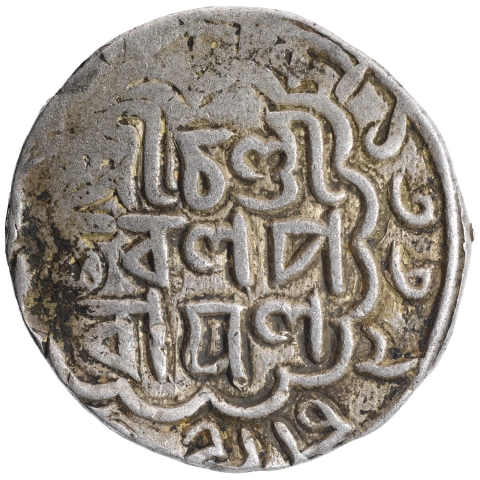This Lot is closed.
- P-Auction # 23
- Bids: 1
- Views:1049
| Start Price 125000 | Estimated Price 125000-150000 |
| login, to view Hammer value | |
| Quick Description | ||||
|---|---|---|---|---|
| Denomination | Silver Tanka | Mint | Chatigrama (Bengal) | |
| Metal | Silver | Year (AH/VS/SE/AM) | SK 1339 | |
| Full Description: Bengal Sultanate, Danujamarddana Deva (Saka 1339-1340/AH 819-821/1416-1418 AD), Chatigrama(Chatgaon) Mint, Silver Tanka, SK 1339, Obv: "sri sri danuja marddana deva" within double hexagon, Rev: "sri chandi charana parayana" within scalloped circle, 10.52g, 28.91mm, (G&G # B315), about very fine, Extremely Rare. Danujamarddana Deva, The first hindu ruler also known as ‘Raja Ganesha’ sat on the throne of Bengal Sultanate in the Saka era 1339 (AH819/1416 AD). He established Hindu rule in Bengal and assumed the title as ‘Danujamarddana Deva’. He was bold enough to depose & stand in Bengal prominence. Raja Ganesha was a Hindu landlord of Bhaturia in North Bengal. He came to serve in Ilyas’ court at the time of Ghiyas-ud-din Azam Shah. He continued to serve the succeeding Sultans of Bengal and later seized control over Bengal soon after the death of Sultan Bayazid. He took advantage of the weakness of the Ilyas Shahi dynasty, which ruled before him, to come to the power. Some have argued against this identification of 'Raja Ganesha' as 'Danujamarddana Deva'. But the fact remains that this ruler was able to strike coins in Pandua(Firuzabad), Sunargaon and Chatgaon during his reign and thus had control of a large area of Bengal. The only person to be in that postion to our knowledge is Raja Ganesha, and the dates fit. He is the first ruler who issued coins in Bengali script and language and they are dated in Saka era.
| ||||


